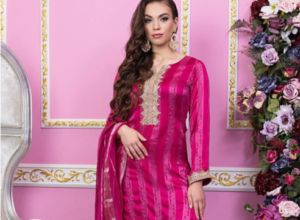A professionally designed photographic logo can be the cornerstone of your company identification in travel magazines, where the visual narrative is crucial. It serves as a visual anchor that encourages recognition. It’s a symbol that captures the soul of your magazine and the first impression readers get of your publication.

Understanding the design tenets that support successful logo design is crucial for producing a photographic logo that connects with your target market and endures over time. In this article, we’ll explore the photography logo design ideas that every travel publication should be familiar with.
Design Principles Of Photography Logos For Travel Magazine
Here are some of the design principles that every travel magazine should know:
Be Simple
In logo design, “less is more” is especially applicable. A cluttered or too complicated logo might be distracting. It could be ineffective in conveying the essence of your magazine.
When designing your photography logo, strive for simplicity. Make sure to reduce your notion to its core components. Consider recognizable famous symbols; their simplicity is precisely what makes them memorable.
Be Versatile
Accessibility and versatility are essential components of a versatile photography logo. A photographic logo needs to have the innate capacity to preserve its aesthetic quality.
Whether displayed on a billboard’s expansive canvas or as a tiny symbol on a mobile device, it should be unique and versatile.
This versatility guarantees that the logo will continue to be a captivating sign in various media environments. It is essential to rigorously test the logo in many contexts. This helps to ensure that it maintains its clarity, legibility, and aesthetic appeal regardless of its size or the media it adorns.
Be Unique
It is essential to stand out in the highly competitive marketplace of travel magazines. Your photographic logo represents your magazine’s visual identity, and in a congested market, uniqueness is crucial.
Your logo must not resemble any other logos used by companies in the tourism sector. Making a logo for your magazine distinguishes it from the many rival publications. It also helps readers remember it.
To attain this uniqueness, an extensive examination of your competitors’ logos is necessary. You can ensure that your brand leaves a lasting impression on your audience. They will find the design components that set your logo apart from the competition.
Be Relevant
Your photography logo must work in harmony with your trip magazine’s subject matter and structure. Your publication’s core values should be directly related to your logo.
It conveys the essence of your publication to your viewers and serves as more than just a visual marker. Consider using design elements in this project that connect to the fundamental concepts. It should include exploration, adventure, and photography.
An artistic representation of a camera lens or a stylized globe can be a compelling symbol. It will quickly communicate the tone of your publication.
Each logo element should be carefully chosen to establish a lasting connection with readers. This ensures relevancy and resonance with your target audience.
Choose Your Color Palette Wisely
Your photography logos play a vital role. It should be a carefully chosen color scheme as it is more than an aesthetic decision. It’s a powerful instrument for evoking feelings and setting the tone of your trip magazine.
You may use the various shades’ psychological effects by studying color psychology. Create content that flows naturally with your magazine’s central message. For example, blue’s calming and adventurous associations make it an appropriate option for a travel magazine logo. It will be conjuring up images of peaceful adventure. On the other hand, red can represent enthusiasm and passion and resonate with readers looking for exciting adventures.
By carefully selecting your color scheme. Give your photographic logo the ability to speak to and engage your audience on a deeper emotional level.
Select Suitable Font
The choice of fonts is essential since typography plays a significant part in your photographic logo. It helps to portray your travel magazine’s identity. The fonts you select should flow naturally with your magazine’s tone and central theme.
Typography with serifs can convey tradition and sophistication. Thanks to their elegant and ornate letterforms. They are making them perfect for magazines with a traditional and timeless aesthetic.
On the other hand, Sans-serif typefaces create a sense of approachability and similarity with their clean, modern lines. They make them ideal for periodicals striving for a more contemporary and casual vibe.
Feel free to experiment with several typefaces. Only end your quest once you find the one that resonates harmoniously with your magazine’s identity. It should be narrative to properly convey the soul of your brand.
Avoid Trends
Although embracing current design trends might be attractive, proceeding with care is essential. A logo heavily influenced by modern trends runs the risk of needing to be updated. Moreover, it demands frequent modifications.
Creating a timeless design that transcends passing trends is the secret to making a lasting impression. Your logo may stand the test of time by adhering to timeless aesthetics. It should convey a feeling of continuity and reliability.
Consider well-known logos that have endured the years with little change. They avoid the necessity for constant innovation while still preserving their relevance and recognition. This is the root of their lasting appeal.
Final Thoughts
Incorporating these design principles into your photography logo can set the stage for a successful. It creates an enduring brand identity for your travel magazine.
Remember that your logo is more than just an image; it’s a visual representation of your magazine’s soul, values, and stories. All these features are waiting to be discovered by readers around the world. So, apply these principles and start on a creative journey. Design a photography logo that captures the essence of your travel magazine’s wanderlust-filled adventures.





